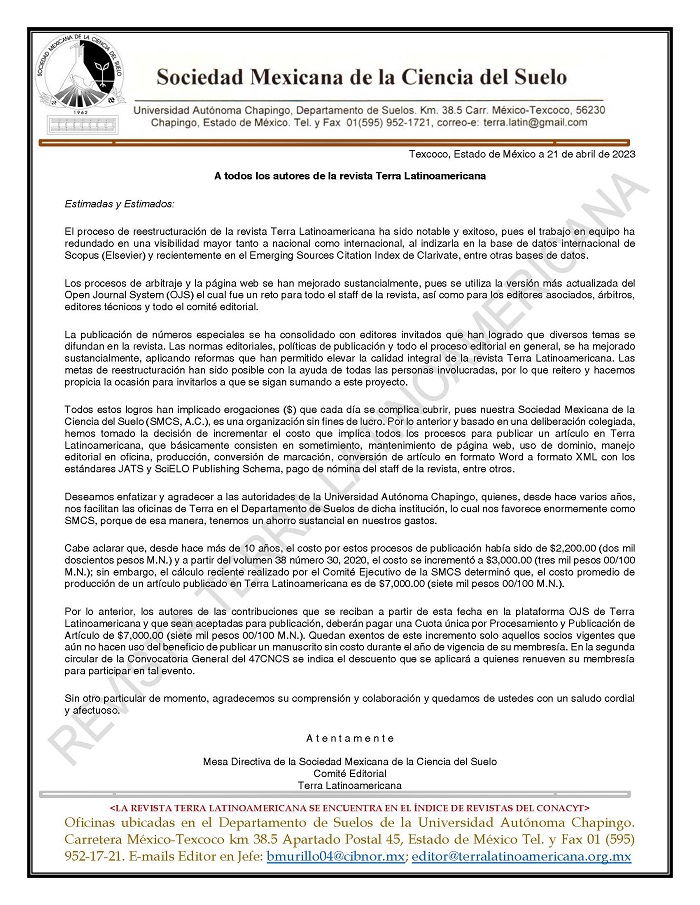Leaf Water Potential of Three Browse Species of a Semiarid Ecosystem in Northern of Mexico
DOI:
https://doi.org/10.28940/terralatinoamericana.v43i.2058Keywords:
arid, drought, hydric stress, shrubsAbstract
Climate change is a global phenomenon, its repercussions disrupt the functioning and integrity of ecosystems. The most marked impact of climate change is water stress, hence the importance of plant selection studies and their strategies based on the availability of water in the soil. The current study aimed to establish how the xylem water potential (Ψ) in three native shrubs, such as Condalia warnockii (Rhamnaceae), Flourensia cernua (Asteraceae), and Larrea tridentata (Zygophyllaceae), is influenced by soil water content, air temperature, relative humidity, and rainfall. The study was carried out in an area located the municipality of Galeana, state of Nuevo Leon. Using a Scholander pressure bomb, the Ψ were estimated at 15-day intervals between June 3 and November 18, 2018, in four dif ferent plants per species at 06:00 h (predawn) and 14:00 h (midday). At the wettest period, Ψ oscillated from -1.13 to -4.27 MPa (C. warnockii) at predawn. In contrast, at midday, L. tridentata and C. warnockii achieved the highest (-1.46 MPa) and lowest (-3.75 MPa) Ψ values, respectively. Soil water content at dif ferent soil depths, and relative humidity were significantly and positively correlated with Ψ at predawn of C. warnockii and F. cernua; whereas air temperature was correlated with F. cernua and L. tridentata at midday F. cernua and L. tridentata maintained high values in Ψ at predawn and midday under water stress conditions, so these species may be considered as drought tolerant species.
Downloads
Publication Facts
Reviewer profiles N/A
Author statements
- Academic society
- Terra Latinoamericana
- Publisher
- Mexican Society of Soil Science, C.A.

















